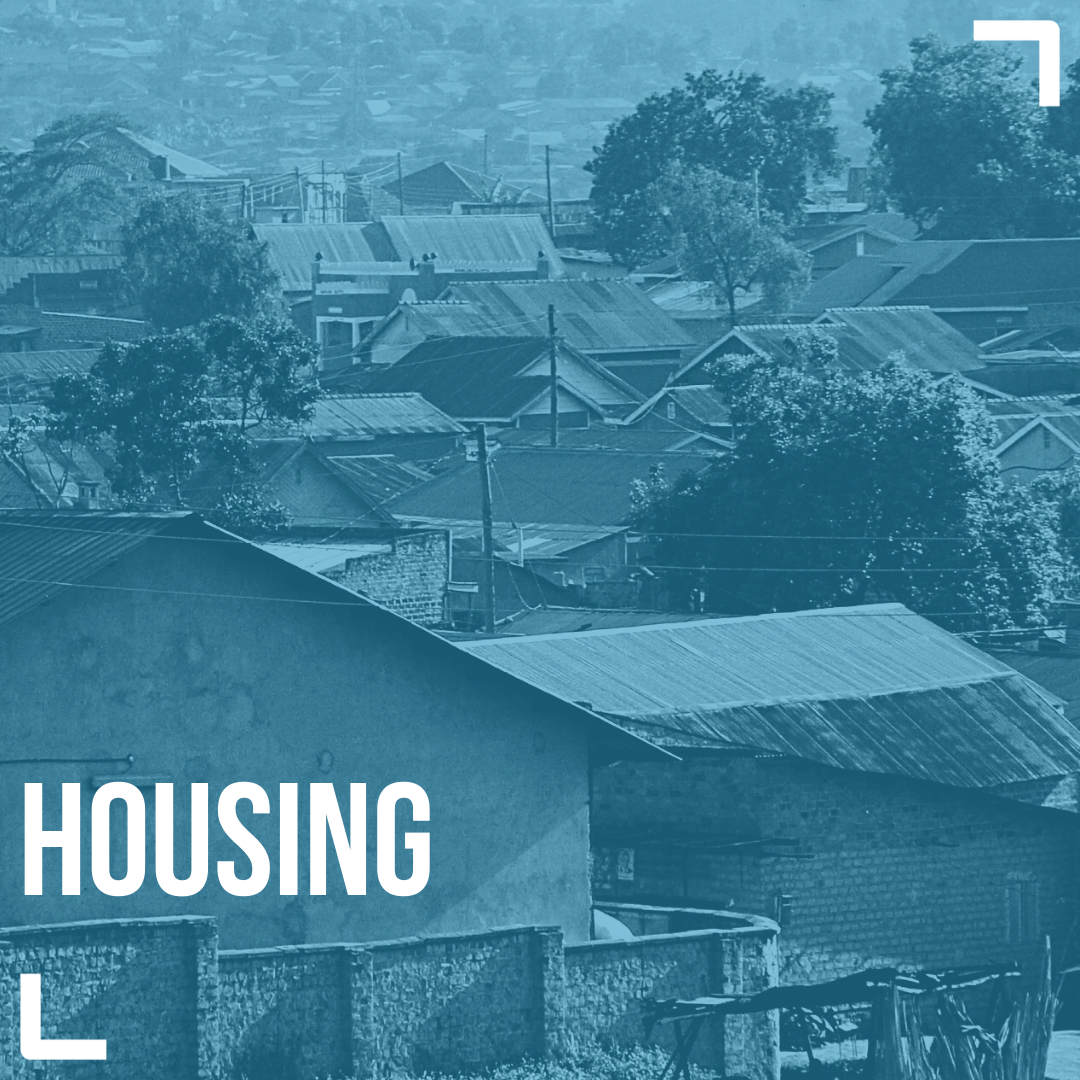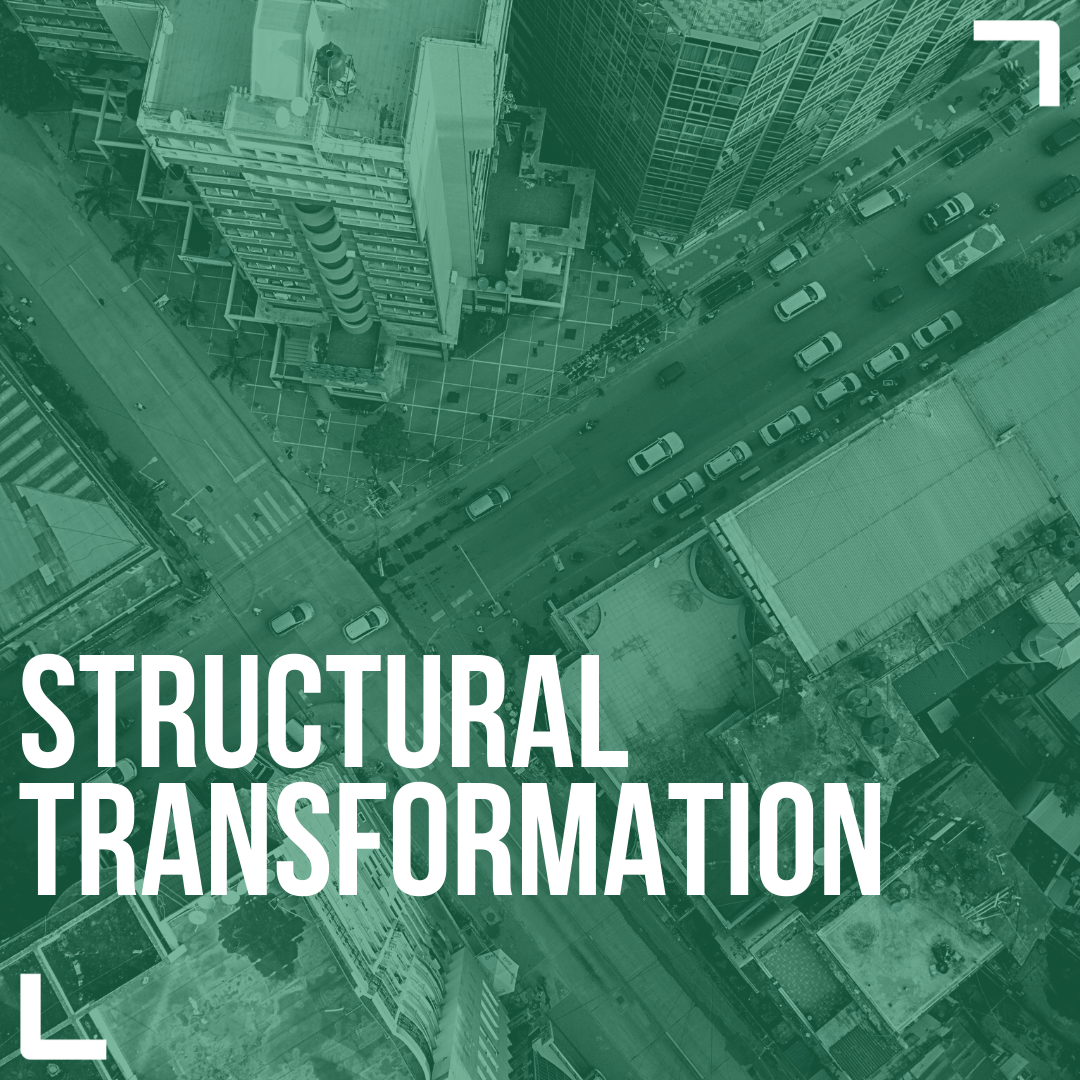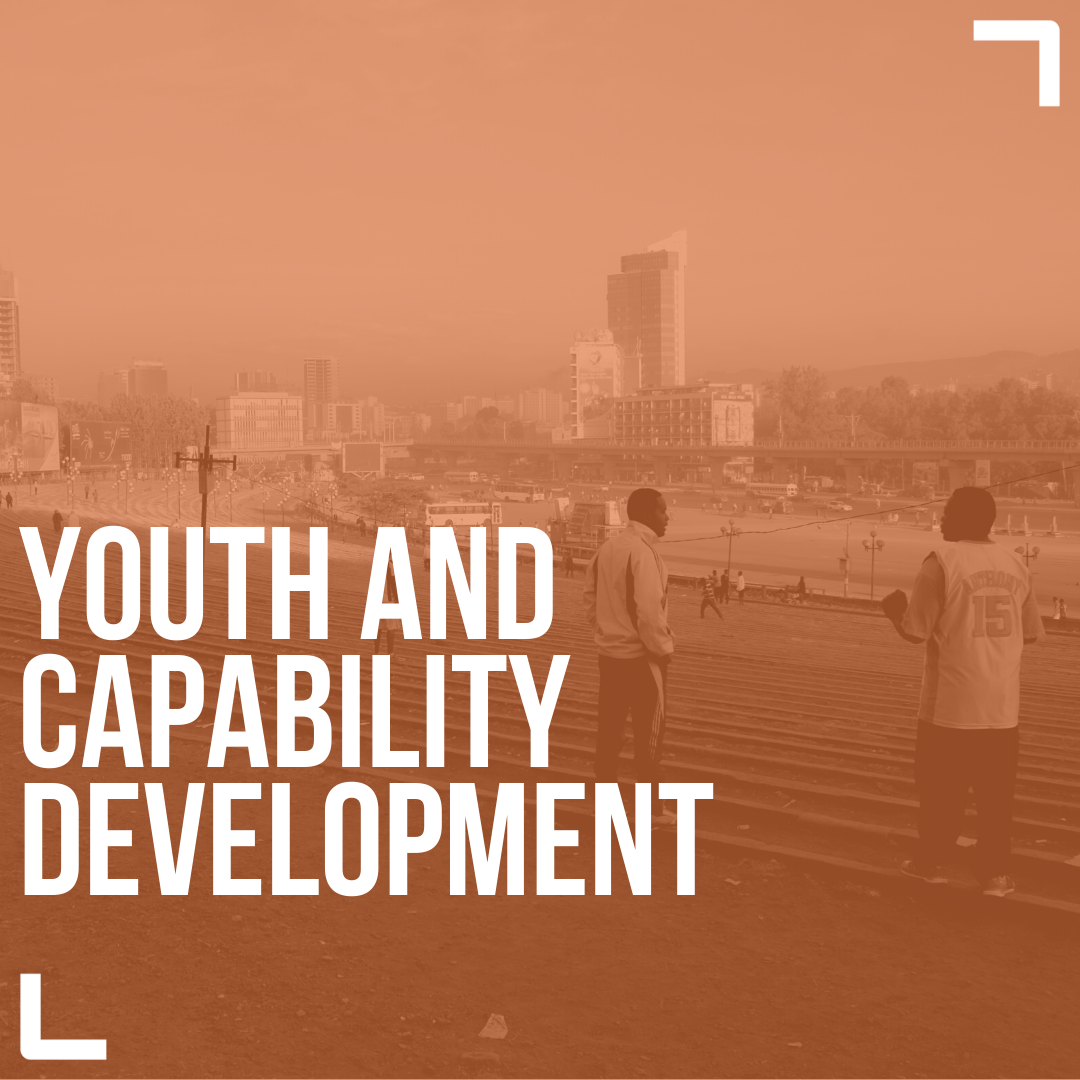Addis Ababa
Addis Ababa is Ethiopia’s capital, located in the geographic epicentre of the country and surrounded by the regional state of Oromia.
With a population of more than 3.6 million people, Addis Ababa is Ethiopia’s largest city, playing a central political, economic and symbolic role, with national political elites influencing the city’s governance and physical transformation.
While Addis Ababa has witnessed rapid state-led economic growth and large-scale infrastructural expansion in the last two decades, the city still faces complex and interrelated challenges surrounding housing, transport, infrastructure and services, youth unemployment, and displacement.
Addis Ababa: City Scoping Study
Read the full study below, or download it as a PDF here.
Read now
African Cities Research Consortium
Addis Ababa: City Scoping Study
By Ezana Haddis Weldeghebrael (The University of Manchester)
Summary
Addis Ababa is Ethiopia’s capital, located in the geographic epicentre of the country, and surrounded by the regional state of Oromia. It is the largest city in the country and plays a central political, economic and symbolic role in Ethiopia. Constitutionally, Addis Ababa is a self-administered city accountable to the federal government. However, since its establishment, successive national political elites have sought to project power from the city, control Ethiopia and showcase their developmental aspirations. National political elites influence the city’s governance and its physical transformation. Consequently, development planning continues to be top-down and excludes the majority of the city’s residents. Driven by the previous ruling coalition’s development strategy, Addis Ababa has witnessed rapid state-led economic growth and large-scale infrastructural expansion in the last two decades. However, the city still faces complex and interrelated challenges surrounding housing, transport, infrastructure and services, youth unemployment, and displacement. The absence of democratic political representation of the city’s residents and the lack of institutional clarity in defining the relationship between the city government and the surrounding Oromia regional state has hindered addressing these urban challenges.
History
Addis Ababa was founded as a royal camp in the late 19th century during the reign of Emperor Menelik II (1889-1913) who displaced indigenous ethnic Oromo agro-pastoralists.[1] Urbanisation during the short-lived Italian colonial occupation (1936-41) was guided by a master plan that left an enduring legacy on the city’s spatial organisation, buildings and a few neighbourhoods. During the imperial regime (1941-74), most of the city’s private land was owned by a small number of landlords, and they engaged in developing housing for sale and rent without planning oversight.[2] Although three master plans were prepared during the imperial regime, their impact on urban development was limited, due to the city’s financial and technical capacity and socio-economic conditions.[3] All urban land and privately rented houses were nationalised in 1975 by the military government (1974-91). The military government also expanded local administration and the state’s political control.
Addis Ababa in the Ethiopian urban system
Addis Ababa’s population is almost ten times larger than Ethiopia’s second-largest city, Gondar.[4] Most of Ethiopia’s administrative, diplomatic and commercial activities are concentrated in the city. Addis Ababa is strongly linked economically and through road infrastructure with other major urban centres of Ethiopia. It is also connected with Djibouti’s port, through a railway, and to Nairobi, with a recently upgraded highway. The city serves as a node for the flow of goods and services to other parts of the country. Addis Ababa has also led to rapid urbanisation in eight satellite towns surrounding the city, located within the Oromia region.
Addis Ababa grew from a settlement of an estimated 15,000 people in 1888 to more than 3.6 million in 2020.[5] According to the Central Statistical Agency, the population is estimated to surpass 5 million in 2036. However, the city’s growth rate has declined in the last couple of decades – from 6.9% annually over the 1961-62 period to 2% from 2007 to 2013.
The introduction of federal arrangement in 1991 and consequent decentralisation of power and resources has encouraged migration towards secondary cities other than Addis Ababa.[6] Nevertheless, due to the decline in the fertility rate, net migration significantly contributes to the city’s growth.[7] Demographically, Addis Ababa is a multi-ethnic city. Ethnic Amhara (47%), Oromo (19.5%), Guraghe (16.3%) and Tigray (6.2%) are the largest ethnic groups.[8]
Along with population growth, the administrative boundary of Addis Ababa expanded from an estimated 32 km2 in 1912[9] to 218 km2 in 1984[10] and 527 km2 in 1994.[11] Built-up areas of the city and the larger metropolitan region also expanded. The metropolitan region’s built-up land area expanded from 80.6km2 in 1984 to 198.7km2 in 2005 and further to 364.5km2 in 2015. Notably, the significant increase in the built-up area between 2005 and 2015 coincided with the period in which the ruling coalition intensified construction of publicly-built housing and rapid economic development to secure political acquiescence from city residents.[12] Nevertheless, the density of the metropolitan region declined from 182 persons per hectare in 1984 to 96 persons per hectare in 2015, indicating significant sprawl and suburbanisation.[13] Overall, such a massive urban expansion resulted in the displacement of many peri-urban ethnic Oromo farmers and environmental degradation in the surrounding Oromia Regional state.[14] In 2008, to manage the urbanisation pressure, the Oromia regional state organised Addis Ababa’s satellite towns and rural hinterlands, located within its jurisdiction, into a single administrative unit called Oromia Special Zone Surrounding Finfinne.
The urban economy
Addis Ababa is the economic powerhouse of Ethiopia. It generates 29% of Ethiopia’s urban GDP and 20% of national urban employment.[15] The service sector (trade, repair and other) comprises 32.5% of the total city’s employment, followed by domestic personnel (11.2%) and construction (9.7%). Together, services (63%) and industry (36%) sectors account for almost all of the city’s GDP.[16]
The share of informal sector employment in Addis Ababa has significantly declined from 37% in 2003 to 6.6% in 2020. Since early 2000, the government adopted a two-pronged approach towards informality. First, through strict enforcement of business registration and tax regulations, especially for small businesses. Second, the city government facilitated micro and small enterprises (MSEs) development by providing training, premises, market integration and microfinance.[17] MSE operators are usually required to join the ruling party to secure government support.[18]
Political context
National political context
Constitutionally Ethiopia is a democratic federal state organised along ethnolinguistic lines. However, de facto centralisation of power, political repression and politicisation of ethnicity continue to be the dominant feature of the state. In 1991, Ethiopian Peoples Revolutionary Democratic Front (EPRDF) – a coalition of three ethnic-based parties (Oromo, Amhara and Tigray) and one multi-ethnic party (Southern Ethiopian People’s Democratic Movement) – defeated the military dictatorship and took power. However, in practice, Tigray People’s Liberation Front (TPLF), which hails from the Tigray ethnic group, dominated the EPRDF coalition and state power until 2018. EPRDF established a strong dominant party-political settlement and facilitated rapid state-led socio-economic development, particularly between 2002 and 2018.[19] However, following the death of influential prime minister Meles Zenawi (a Tigrayan) in 2012, the Oromo and Amhara EPRDF member parties became more assertive in challenging TPLF’s dominance. The alliance between Oromo and Amhara EPRDF member parties was supported by a wave of protests (2014-18) in Oromia and Amhara regions against TPLF dominance. This led to the election of Abiy Ahmed, an ethnic Oromo, as chairperson of EPRDF and prime minister in 2018. Ahmed distanced himself from EPRDF’s state-led developmentalist ideology and launched political and economic liberalisation.
Despite his initial democratic opening and promise of political liberalisation, the new prime minister ultimately sought to re-centralise power. He merged EPRDF into a single party, called Prosperity Party, and sidelined the TPLF. He also facilitated the appointment of loyal regional presidents and suppressed dissent. However, due to the collapse of local security structures during the 2014-18 wave of protests and EPRDF’s internal power struggle, there has been a significant increase in ethnic violence, armed insurgency and political assassination since 2018.[20] Furthermore, the prime minister’s drive to concentrate power, and the TPLF-led Tigray regional government’s demand for more regional autonomy, led to a military conflict and a significant humanitarian crisis in Tigray region. The federal government managed to depose TPLF from administering Tigray in November 2020, but TPLF continued to fight federal troops and their allies. The increasing political instability, together with the economic impact of the Covid-19 pandemic, is making it difficult to sustain the development momentum of the last two decades.
National significance and relations between city and national government/elites
Due to the city’s political, economic and symbolic significance, successive groups of national political elites have sought to control the city. Historically, national elites have also used Addis Ababa as a social and spatial laboratory to experiment with their modernist vision and to disseminate the experience to other parts of the country.[21] Similarly, in line with the administration’s economic liberalisation zeal, the current prime minister promotes flagship riverside renewal schemes and luxurious real estate developments in Addis Ababa, in partnership with international developers. The prime minister uses these aesthetic-led projects, and the construction of “world-class” amenities and facilities, to herald the dawn of prosperity in the country under his leadership. Such mega-projects are a clear shift away from EPRDF’s state-led and pro-poor development schemes towards hyper-elite and tourist-focused urban projects undertaken in partnership with foreign capital.[22]
As per the 1995 constitution, Addis Ababa city government is administered by a popularly elected city council and a mayor accountable for the federal government and the city’s residents. However, all the city administrations that have governed Addis Ababa since 1995 were either elected in less credible elections or directly appointed by the prime minister. Additionally, the EPRDF had been appointing loyal party members from other regions to various leadership positions within the city administration, denying city residents self-administration rights.[23] The new prime minister has also continued appointing non-residents of the city in the city administration, including the mayoral post.
Since the early 2000s, Addis Ababa has also implemented decentralisation of responsibilities to sub-cities and districts. The city is organised into 11 sub-city administrations responsible for planning, implementation and budget allocation for socio-economic development and municipal services provision. The third-tier administration is the district administration, responsible for public mobilisation and executing delegated municipal functions. However, most of the administrators at the sub-city and district level are political appointees controlled and supervised by the city administration officials.[24]
Main urban challenges facing Addis Ababa
Although the EPRDF government’s development policies resulted in a reduction of poverty inequality and unemployment in Addis Ababa, double-digit inflation in the post-2005 period significantly impacted the urban poor’s purchasing power. Youth unemployment is a major challenge; about 25% of young people (aged 15-29) in Addis Ababa were unemployed in 2020.[25] There is also significant in-migration to Addis Ababa, and most recent migrants endure economic hardship and a poor quality of life.[26] The city government forces independent small informal businesses to register and pay taxes, while excluding street vendors from main streets.
Congested and dilapidated houses dominate the inner city of Addis Ababa and around 70-80% of Addis Ababa’s housing stock is estimated to be in slum conditions.[27] The city government has been undertaking massive inner-city slum clearance by relocating the residents to poorly serviced and remote peripheral locations. The city government has also constructed and transferred more than 200,000 subsidised condominium flats since 2005. However, the 20% upfront payment and the monthly mortgage is not affordable for many city residents. Many of the housing scheme’s beneficiaries were forced to sell or rent their flats and seek cheaper accommodation in the slums or smaller flats. Furthermore, there are still approximately 768,000 on the waiting list to buy government-constructed apartments. The housing programme is beset by widespread corruption, and the city government has been allocating flats to its loyal members who were not on the housing waiting list.[28]
The shortage of affordable formal housing has led to the expansion of peripheral informal settlements. The government’s response towards informal settlements is usually sporadic forced eviction campaigns and gradual inclusion through service provision and regularisation of long-established settlements.
Addis Ababa faces a severe water shortage. Residents of informal settlements and low-income areas are disproportionately impacted, due to constant disruption and limited capacity to supplement public water supply.[29]
Floods risk is aggravated, due to climate change, informal housing construction along river banks, an increase of impervious surfaces, poor drainage and improper solid waste disposal, and green spaces loss. Many parts of the city are also at risk of fire, due to kerosene and open fire use for cooking, the congested settlement pattern and poor housing quality in the inner-city slums.[30]
Addis Ababa registers an annual average of 400 fatalities due to traffic accidents, mainly affecting pedestrians (88%).[31] Although the major mode of transport (54%) is walking, the government’s large-scale investment in road infrastructure has encouraged motorisation, creating rush-hour congestion.[32] Massive housing complexes and informal settlements located in the city’s periphery are not well served by public transport.
Political factors shaping whether urban challenges are addressed
The contested claims over Addis Ababa and top-down modes of governance have made it difficult to address the city’s challenges. First, the political group that dominates the national government dictates the governance of the city. Accordingly, the federal government’s excessive intervention in the city’s governance and development has compromised the city government’s accountability and responsiveness to its residents.
Second, most city government officials are political appointees and are expected to be loyal to the party and their superiors, rather than to their constituencies. The lack of downward accountability has allowed political appointees and many city government employees to abuse their power and pursue personal enrichment through corruption. In response to corruption, maladministration and changing political configurations, the city government regularly reshuffles its officials and civil servants. The high turnover of officials and employees inhibits service delivery and has reduced institutional memory.
Third, while the Ethiopian constitution guarantees the Oromia region “special interest” in Addis Ababa, because the city is an enclave within the region, a law that specifies and governs the “special interest” has not been promulgated.[33] The absence of a mutually agreed institutional framework to streamline the relations between Addis Ababa city government and Oromia regional state has made it difficult and politically contentious to coordinate metropolitan development interventions (such as improvement of the water supply and development of landfill sites). For example, an attempt to coordinate Addis Ababa and the surrounding Oromia region’s development through a metropolitan plan in 2014 was vehemently opposed by Oromia region officials and triggered the 2014-18 wave of protests in Oromia region.
There are multiple research outputs, policies, proposed strategies, and initiatives aimed at tackling Addis Ababa’s urban challenges, although few that take into account the city’s complex political economy. The African Cities Research Consortium could undertake in-depth studies of complex problems in Addis Ababa and forge partnerships with a range of stakeholders committed to reform and addressing some of the city’s most pressing challenges.
References
Addis Ababa Resilience Project Office (2020). Addis Ababa Resilience Strategy. Addis Ababa. Available online (accessed 25 May 2021).
Central Statistical Agency (2020a). Key Findings on the 2020 Urban Employment Unemployment Survey. Addis Ababa: CSA.
Central Statistical Agency (2020b). Statistical Report on the 2020 Urban Employment Unemployment Survey. Addis Ababa: CSA.
Central Statistical Agency (2018). The 2015/16 Ethiopian Household Consumption – Expenditure (HCE) Survey, Results For: Addis Ababa City Administration. Addis Ababa: CSA).
Central Statistical Agency (2013a). Population Projection of Ethiopia for All Regions at Wereda Level from 2014 – 2017. Addis Ababa: CSA.
Central Statistical Agency (2013b). Population Projections for Ethiopia 2007-2037. Addis Ababa: CSA.
Central Statistical Agency (2011a). Ethiopia 2012 Population Projection. Addis Ababa: CSA.
Central Statistical Agency (2011b). Key Findings on the 2010 Urban Employment Unemployment Survey. Addis Ababa: CSA.
Central Statistical Agency (2007). 2007 Census Result: Addis Ababa. Addis Ababa: CSA.
Cohen, J. M. and Koehn, P. M. (1977). “Rural and urban land reform in Ethiopia”. The Journal of Legal Pluralism and Unofficial Law 9(14): 3-62.
Ethiopian Citizens for Social Justice (EZeMa) (2020). Assessment Report on Addis Ababa Land Grabbing and Unfair Housing Allocation (Amharic). Addis Ababa: EZeMa.
FDRE (1994). The Constitution of the Federal Democratic Republic of Ethiopia. Addis Ababa: Berhanena Selam.
Garretson, P. P. (1974). A History of Addis Ababa from Its Foundation in 1886 to 1910. PhD thesis. London: SOAS, University of London.
Gebremariam, E. B. (2020). “The politics of dominating Addis Ababa (2005-2018)”. ESID Working Paper No 148. Manchester: Effective States and Inclusive Development research centre, The University of Manchester.
Geleta, F. N. (2014). “State of Oromia’s interest in Addis Ababa (Finfinnee): Undelivered constitutional promises”. Journal of Oromo Studies 22: 23-62.
Goodfellow, T. (2017). “Urban fortunes and skeleton cityscapes: Real estate and late urbanization in Kigali and Addis Ababa”. International Journal of Urban and Regional Research 41(5): 786-803.
ITDP Africa (2020). Ethiopia Non-Motorised Transport (NMT) Strategy 2020-29. Addis Ababa: ITDP Africa.
Kelsall, T. (2013). Business, Politics and the State in Africa: Challenging the Orthodoxies on Growth and Transformation. London: Zed Books.
Lyons, T. (2019). The Puzzle of Ethiopian Politics. London: Lynne Rienner Publishers Inc.
Mohamed, A. and Worku, H. (2019). “Quantification of the land use/land cover dynamics and the degree of urban growth goodness for sustainable urban land use planning in Addis Ababa and the surrounding Oromia Special Zone”. Journal of Urban Management 8(1): 145-158.
Mulatu, W. (2013). “Addis Ababa, Ethiopia – Africa’s diplomatic capital”. Cities 35: 255-269.
OPHCC (1987), cited in Feyera, A. and Terefe, D. (1987), “Urbanization and changing livelihoods: The case of farmers’ displacement in the expansion of Addis Ababa”. In C. Teller and A. Hailemariam (eds.) (2011), The Demographic Transition and Development in Africa: The Unique Case of Ethiopia. Springer Netherlands, pp. 215-235.
Samson, K., Bongwa, A. and van Dijk, M. P. (2011). Decentralization and Service Delivery in Ethiopia. Maastricht: Shaker Publishing.
Shimelis, B. G. (2013). “City as nation: Imagining and practicing Addis Ababa as a modern and national space”. Northeast African Studies 13(1): 167–213.
Tadesse, K.-M. (2003). “The historical evolution of municipal management in Addis Ababa, Ethiopia”. Arab World Geographer 6(4): 255-270.
Terrefe, B. (2020). “Urban layers of political rupture: The ‘new’ politics of Addis Ababa’s megaprojects”. Journal of Eastern African Studies 14(3): 375-395.
Tufa, D. (2008).“Historical development of Addis Ababa: Plans and realities”. Journal of Ethiopian Studies 41 (1/2): 27-59.
UN-Habitat (2017). The State of Addis Ababa 2017 Report. Nairobi: UN-Habitat.
Weldeghebrael, E. H. (2019). Inner-city Redevelopment in an Aspiring Developmental State: The Case of Addis Ababa Ethiopia. PhD thesis, The University of Manchester.
World Bank (2015a). Addis Ababa, Ethiopia: Enhancing Urban Resilience. Washington, DC: World Bank,
World Bank (2015b). Ethiopia Urbanization Review: Urban Institutions for a Middle-Income Ethiopia. Washington DC: World Bank.
World Bank (2010). The Ethiopian Urban Migration Study 2008: The Characteristics, Motives and Outcomes of Migrants to Addis Ababa. Washington, DC: World Bank.
[1] Garretson (1974).
[2] Cohen and Koehn (1977).
[3] Tufa (2008).
[4] Central Statistics Agency (2013a).
[5] This is official estimate. Other estimates put the population Addis Ababa more than 5 million.
[6] Mulatu (2013).
[7] UN-Habitat (2017).
[8] Central Statistical Agency (2007).
[9] Tadesse (2003).
[10] OPHCC (1987) cited in Feyera and Terefe (2011).
[11] Central Statistical Agency (2011a).
[12] Goodfellow (2017).
[13] Mohamed and Worku (2019).
[14] Geleta (2014).
[15] UN-Habitat (2017).
[16] UN-Habitat (2017).
[17] World Bank (2015b).
[18] Gebremariam (2020).
[19] Kelsal (2013).
[20] Lyons (2019).
[21] Shimelis (2013).
[22] Terrefe (2020).
[23] Weldeghebrael (2019).
[24] Samson, Bongwa, and van Dijk (2011).
[25] Central Statistical Agency (2020b).
[26] World Bank (2010).
[27] World Bank (2015b).
[28] Ethiopian Citizens for Social Justice (EZeMa) (2020).
[29] Addis Ababa Resilience Project Office (2020).
[30] World Bank (2015a).
[31] Addis Ababa Resilience Project Office (2020).
[32] ITDP Africa (2020).
[33] FDRE ( 1994).
Hear Ezana Haddis Weldeghebrael talk about youth unemployment, housing and other challenges facing Addis Ababa and how ACRC can help support transformative action through catalysing social mobilisation.
LATEST NEWS from ACRC
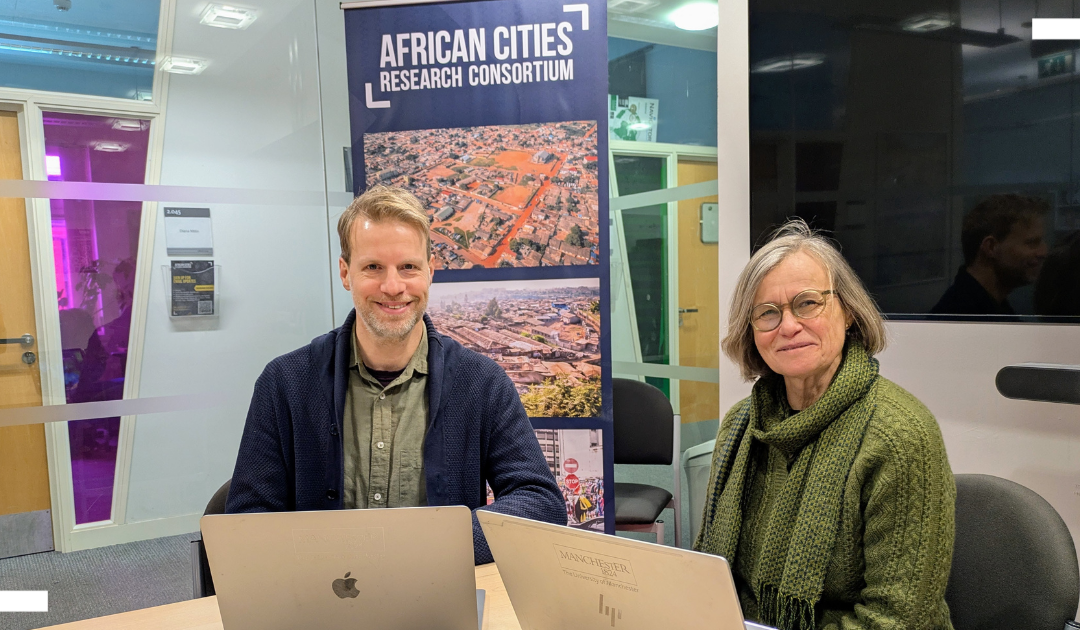
Welcoming Professor Tom Goodfellow to Manchester
Jan 8, 2026
We’re excited to welcome Professor Tom Goodfellow to The University of Manchester to take up a dual role as Professor of Urban Development at the Global Development Institute (GDI) and CEO of the African Cities Research Consortium (ACRC) – a position he will take over from Diana Mitlin in August this year.
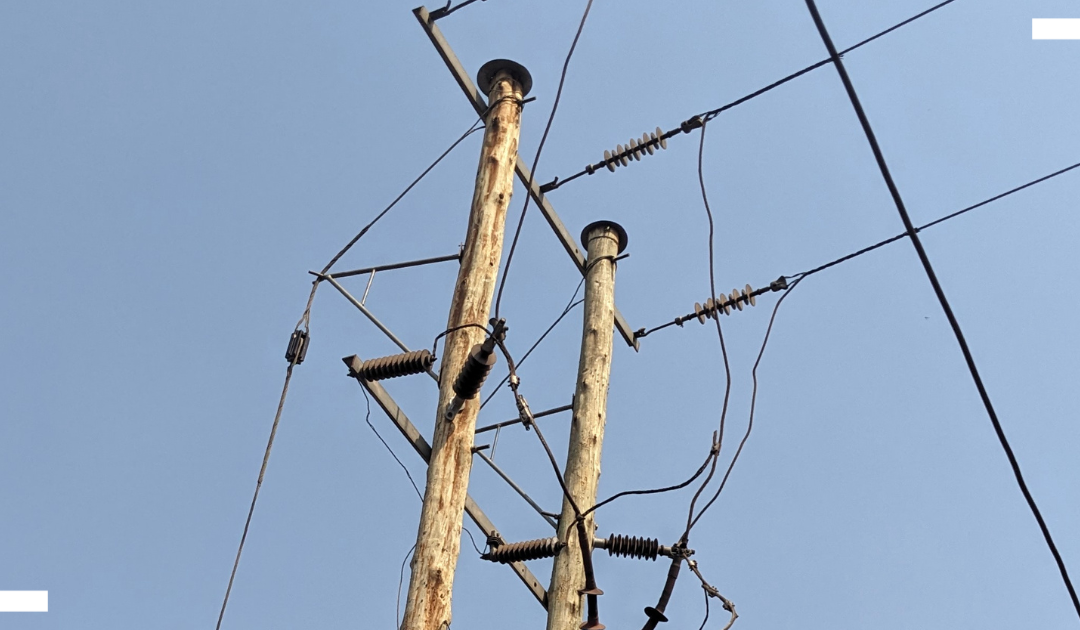
Unravelling a complex web: Electricity subsidy experiences in Kampala’s informal settlements
Jan 7, 2026
Electricity subsidies may seem like a straightforward solution to the challenge of supplying electricity to Kampala’s informal settlements. However, the contextual realities of the electricity supply chain paints a slightly different story.
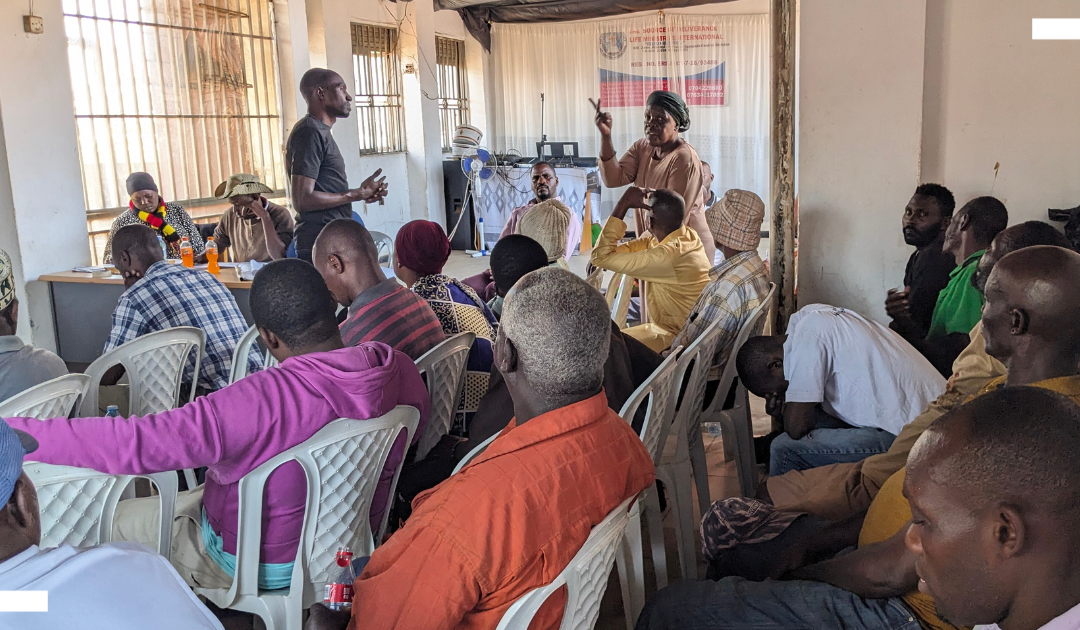
Mapping electricity access in Kampala’s informal settlements: Kamyufus, subsidies and community perceptions
Jan 7, 2026
Through our research into the electricity supply and distribution value chains in Kampala’s informal settlements, we are trying to learn more about why electricity subsidies fail to reach those in most need – and the alternatives that residents turn to, in order to gain access to power.
